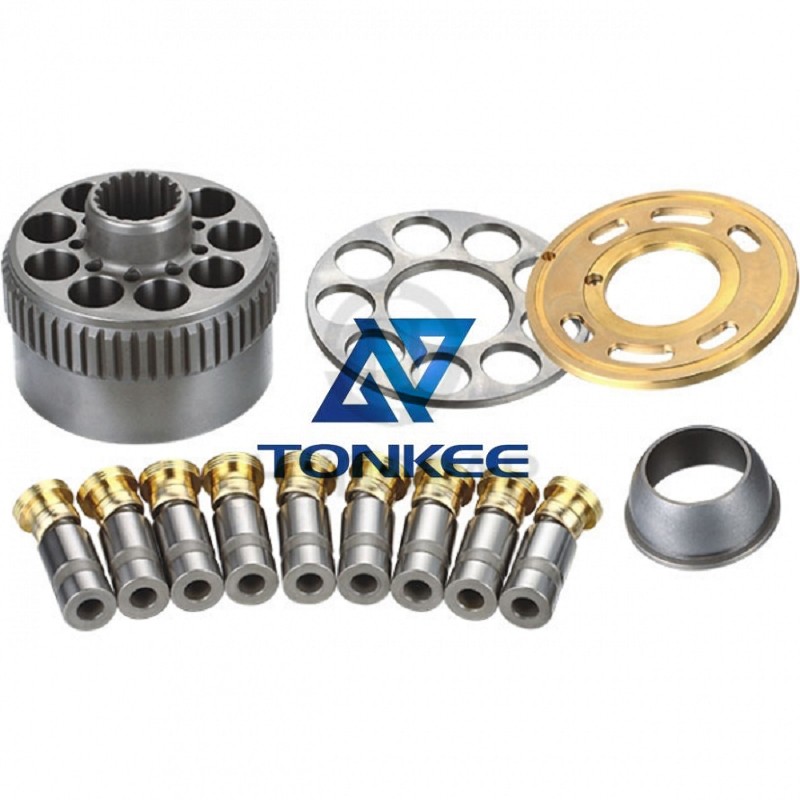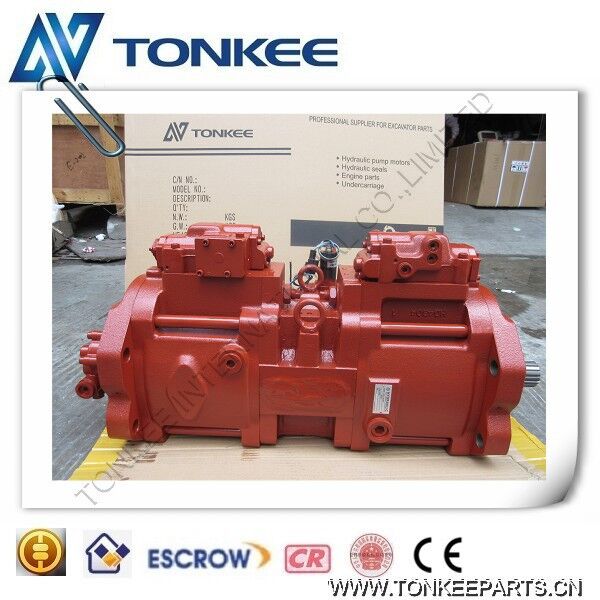
Cylinder Block: The cylinder block houses the pistons and is responsible for guiding their movement.
It typically features multiple cylinders to accommodate the piston assembly. The material used for the cylinder block is often high-strength alloy.
Valve Plate Assembly: This component contains the inlet and outlet valves, which control the flow of hydraulic fluid in and out of the pump. The valve plate assembly plays a crucial role in regulating the pump's pressure and flow rate.
Swash Plate: The swash plate is mounted at an angle to the drive shaft and controls the piston's stroke length. By altering the angle of the swash plate, you can adjust the pump's displacement and, subsequently, its output.
Drive Shaft: The drive shaft connects the pump to a power source, such as an electric motor or an engine. It transfers the rotational motion from the power source to the swash plate, initiating the piston movement.
Bearing and Seals: Bearings support the rotating elements, reducing friction and wear. Seals are crucial to prevent fluid leakage and maintain system efficiency. High-quality, durable seals are essential for long-lasting performance.
Hydraulic Port Connections: The pump features inlet and outlet ports for hydraulic fluid.
The port connections can vary depending on the specific model and application. They are typically threaded for secure hose or pipe attachment.
Housing: The pump housing encases all the internal components, providing protection from environmental factors and ensuring proper alignment of the parts. It's usually made from a robust material to withstand the rigors of industrial use.
Pressure Relief Valve: Some PC75UU Series Piston Pumps include a built-in pressure relief valve. This valve prevents over-pressurization of the hydraulic system, safeguarding the pump and other components.
Hydraulic Fluid Compatibility: The PC75UU Series Piston Pump parts are designed to work with a wide range of hydraulic fluids, including mineral oils, synthetic fluids, and water-based hydraulic fluids. It is essential to choose the appropriate fluid based on your application's requirements and environmental conditions.
Mounting Options: These pumps come with various mounting options, including flange, foot, or bracket mounts. The choice of mounting style depends on the installation requirements and space constraints.



 English
English Русский язык
Русский язык




